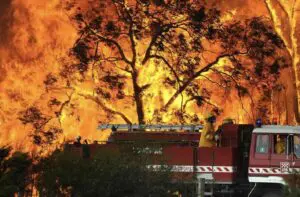
Presuming Basslink is fixed in the next month and rainfall returns to typical levels (a couple of big ifs at this point), the Tasmanian state government will claim that our electricity crisis is behind us. The facts are rather less encouraging from all angles; energy security, economic impact and environmental consequences.
Even if Basslink starts running flat out southwards as soon as it is fixed it can only supply 500 MW, a bit less than half Tasmania’s average consumption of 1100 MW. The remaining half has to come from hydro or continuing to burn expensive gas at Tamar Valley. (The 200 MW of diesel generators on order are likely only to be used if repairs are delayed or there is no significant rain.) With our dams nearly empty, it is likely that we will be reliant on a fair bit of gas and Victorian coal fired electricity until our dams are back to a safe level.
The core problems is that long term sustainable yield from existing hydro (8700 GWh) and the two existing wind farms (898 GWh in 2014-15) is a bit less[1] than annual consumption (9752 GWh in 2014-15). In normal operation Basslink makes up any difference, but this makes it very difficult to make a big impact on storage levels and explains why over the long term Basslink imports more than it exports.
The peak energy stored in Hydro dams has gone down every year since the 2012 peak of 62% in October 2012. Storage is currently at 17.3%[2] and is projected to go down to 14%[3] by mid March. One can argue about the respective contributions of normal weather variability, climate change, the policies of respective state governments, and the rush to earn export cash during the carbon tax period. But the unarguable fact is that we are living beyond our current renewable energy means.

To meet the shortfall described above, and build our dams back up to 62% over 5 years requires an extra 1544 GWh a year[1]. That’s less than the projected output of the abandoned TasWind proposal for King Island. But hopefully we have learnt from the current crisis not to rely on a single source of energy or a technology with a single point of failure.
A plausible diversified portfolio might consist of:

A variety of sources and locations has many benefits:
- spreading the economic benefit widely across the state,
- tapping multiple sources of public and private capital,
- minimising environmental impact in any one location,
- increasing resilience to changing economics and circumstances,
- minimising the need for expensive new transmission infrastructure, and
- getting started faster.
We need to start rapidly on building this extra infrastructure. Until a substantial section of it is in place we will continue using expensive gas and/or dirty brown coal, our dams will remain low, and our energy security will remain fragile.
The situation will get worse rapidly if:
- Basslink repairs take longer than anticipated,
- rainfall does not return to anticipated levels and we have to set a ‘new normal’ as a result of climate change[1], or
- electricity demand increases.
In the current circumstances, praying for rain is a reasonable impulse, but it is not an alternative to evidence based policy and urgent political action to encourage investment in new renewable energy generation capacity.





